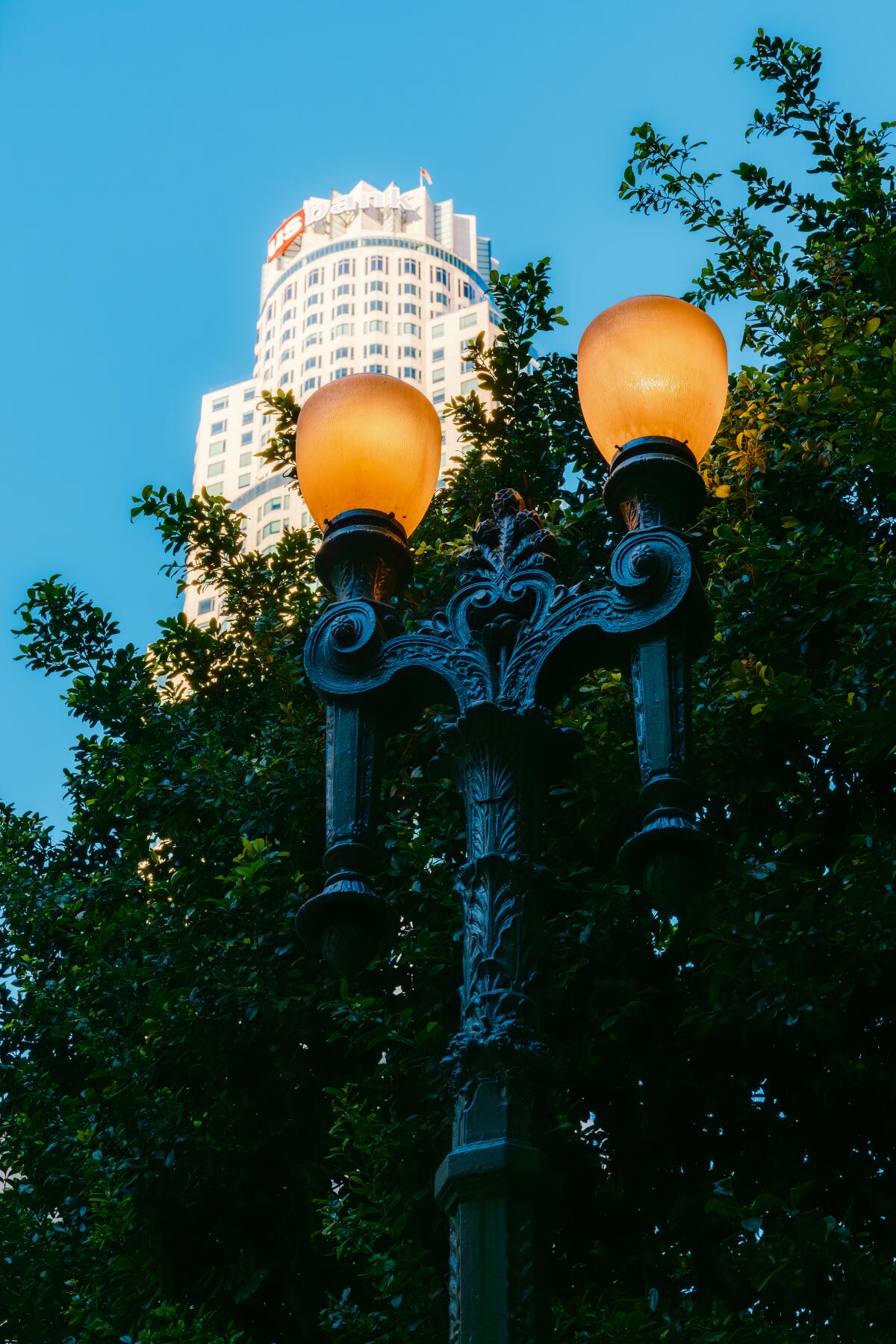
This guide to L.A.’s historic streetlights will illuminate your view of the city
Did you know that there are more than 223,000 streetlights in Los Angeles? And that those 223,000 lamps come in more than 400 designs? And that some of those designs are over 100 years old?
You might not have noticed them. And yet, believe it or not, Los Angeles has the most diverse streetlight ecosystem in the entire United States. We’ve got lamps that look like ancient temple columns. We’ve got Gothic-inspired lanterns hidden in the hills. We’ve got lamps with dragons on them. We’ve even got street lamps decorated with topless women.
Planning your weekend?
Stay up to date on the best things to do, see and eat in L.A.
Ever since a group of businessmen banded together in 1905 to install our first ornamental lampposts along Broadway, eye-catching streetlights have been part of L.A.’s urban identity. This isn’t just because our balmy weather allowed them to last longer than their eastern counterparts. In 1909, urban planner Charles Mulford Robinson famously called our lamps “the handsomest in the United States.” An exaggeration? I think not. In a relatively young city defined by its free-wheeling spirit of “anything goes,” streetlamps embodied bold, progressive values purported to uplift L.A. residents. (You can trace this sentiment all the way back to the 19th century, when The Times started calling for electric lights in Los Angeles — it was one of the biggest news stories of 1882.)
One of the coolest things about streetlights is that their messages are always changing. That’s still true today. In commercial districts, streetlights imparted stature and civic ambition. In residential areas, they advertised the virtues of homeownership. Streetlights tell us a lot about our tastes but also what Angelenos cared about: nostalgia, safety, neighborhood pride. Even areas with no streetlights spark questions about what it took to be “seen.”
If you’re reading this, I’m guessing there’s a good chance you’ve never been on a streetlight safari. You’re not alone. While architectural tours are common — and many of us can rattle off the names of our skyscrapers and historic homes — the streetlights standing outside of them tend to get overlooked. And yet there’s a lot we can learn from these objects, whether they’re tall or short, old or new, simple or heavily ornamented. Are they meant to be seen from the sidewalk or a car window? Do they channel feelings of security or civic ambition? Streetlights both shape and reflect the ways we live, move around and think about public space.
In the back of my book, “Electric Moons: A Social History of Street Lighting in Los Angeles,” I include a field guide to 40 different streetlights located throughout L.A. County. Below, you’ll find a small smattering to get you started — all are located in the city of Los Angeles and are maintained by the Los Angeles Bureau of Street Lighting (LABSL). A very special thanks to Glen Norman and Jeffrey Ziliotto for assistance with the lamp locations.
Seen ’em all and hungry for more? Got a favorite lamp in town that you want me to know about? DM me on Instagram at @streetlampilluminati. And to report a streetlight out, let the LABSL know by filling out this form.
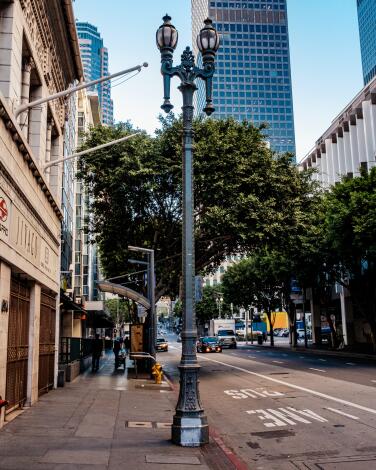
The Broadway Rose
“This is one of the most elaborate jobs of ornamental electroliers ever made on the coast,” The Times reported, “and is a 100 percent home product.” Thanks to popular demand, more Roses hit downtown streets in 1921 and 1924.
In 1948, however, as L.A. became more of a driving city, the shafts and luminaires of the original string of Broadway Roses were replaced with simpler, more functional overhead designs, leaving only the florid bases intact. Today there are only a handful of complete models remaining in Los Angeles. You can also see a few of them in Chris Burden’s “Urban Light” at the south entrance of LACMA.
Find them: 6th Street between Olive and Flower streets, and a lone outlier on Grand Avenue, north of West 6th Street
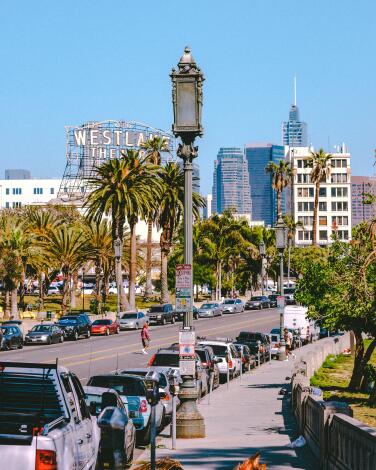
The Wilshire Lantern
In 1933, when Wilshire Boulevard was extended eastward through MacArthur Park, more Lanterns were installed to light the way — today, that “eastern addition” is all that survives. Fun fact: Each Wilshire Lantern weighs 1,200 pounds and exhibits a medley of eclectic motifs, such as Celtic knotwork, Egyptian papyrus leaves or late Victorian exotica. Topless sphinx-like vixens grow, like flower nymphs, out of stylized acanthus plants along the edges of the light box.
Find them: Wilshire Boulevard between Park View and Figueroa Street
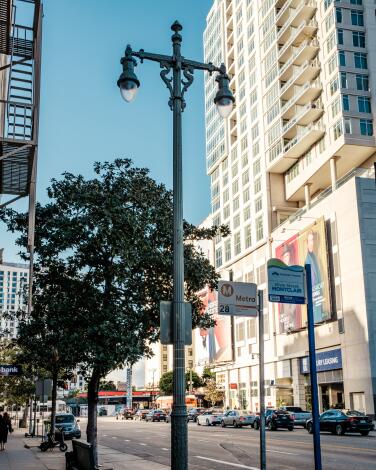
The Olympic Special
According to legend, they were commissioned for the 1932 Olympic Games, when 10th Street was officially renamed Olympic Boulevard in honor of L.A.’s first time hosting the global sporting event. In reality, these peculiar lamps didn’t hit the streets until 1938, after a major road-widening project. The original Olympic Specials had graceful teardrop-shaped luminaires hanging over the road — you can still see them from Century Park West to Beverly Glen Boulevard. Since then, some have been replaced with faithful replicas; others have ugly cobrahead shapes, which do no favors for the lamp’s graceful silhouette.
Find them: The single-light versions run along Olympic Boulevard from Lorena Street in Boyle Heights to Pontius Avenue in West L.A. (with some breaks). There are only three double-light versions left: Olympic Boulevard and Flower Street, Los Angeles Street between First and Temple Streets, and in Sheila Klein’s public sculpture, “Vermonica” (marked on this map).
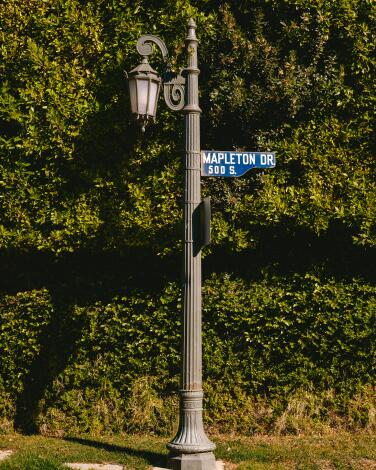
Holmby Hills Lantern
Find them: Residential streets east of Beverly Glen from Club View Drive to Greendale Drive. Some can be found on Beverly Glen itself from Sunset Boulevard to Greendale.
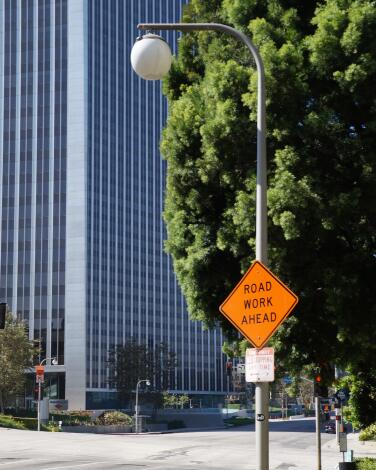
Century City Special
Find them: Avenue of the Stars from Santa Monica Boulevard to Pico Boulevard, Constellation Boulevard from Century Park West to Century Park East (at the intersections), Empyrean Way from Avenue of the Stars to Century Park East, Galaxy Way from Century Park West to Century Park East, and around Fox Plaza (aka Nakatomi Tower in “Die Hard”), shown on this map.
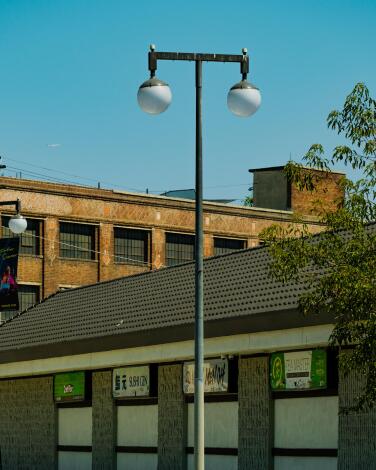
Little Tokyo Double
Find them: 1st Street from Central Avenue to Judge John Aiso Street, 2nd Street from Central Avenue to Alameda Street, 3rd Street from Central Avenue to Los Angeles Street, Central Avenue from 1st Street to 3rd Street (marked on this map).
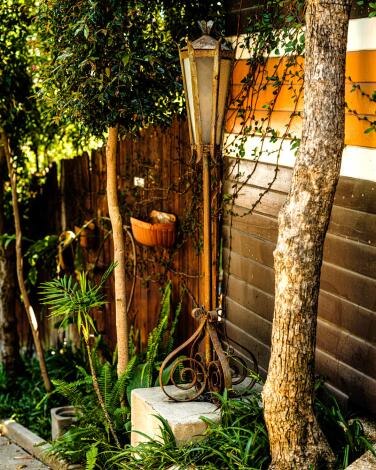
The Alta Loma Lantern
Find them: Alta Loma Terrace, off of Highland Avenue
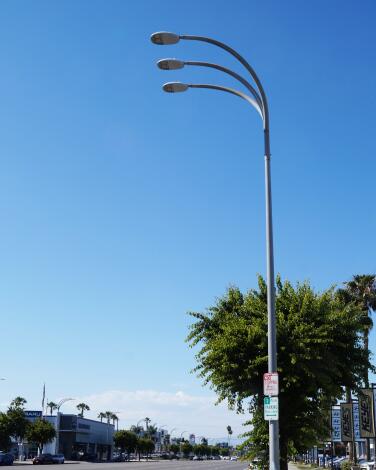
The Van Nuys Special
Find them: Van Nuys Boulevard from Sherman Way to Burbank Boulevard (marked on this map); Victory Boulevard from Cedros Avenue to Tyrone Avenue
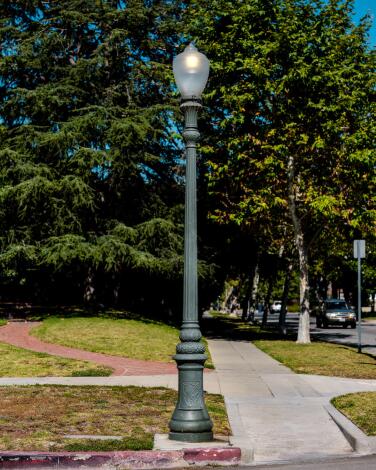
The Windsor Square Special
Find them: Lucerne, Plymouth, Windsor and Lorraine boulevards between West 3rd Street and Wilshire Boulevard
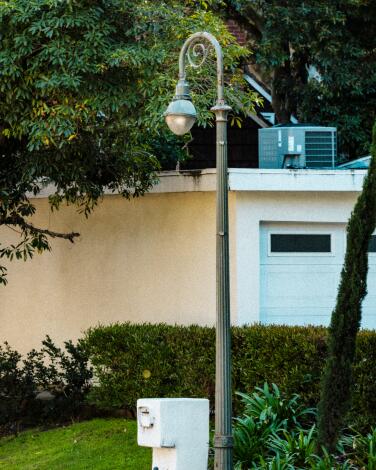
The L.A. Crook
Find them: Benedict Canyon Drive between De Camp Avenue and Clear View Drive
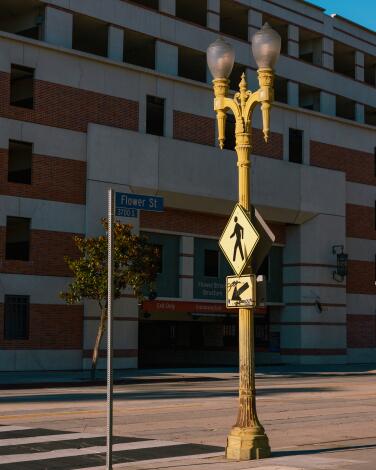
The Southwest 1806
Find them: Flower Street between West 37th and West 38th Streets. There are also some replicas on Flower between Washington Boulevard and West 37th Street.
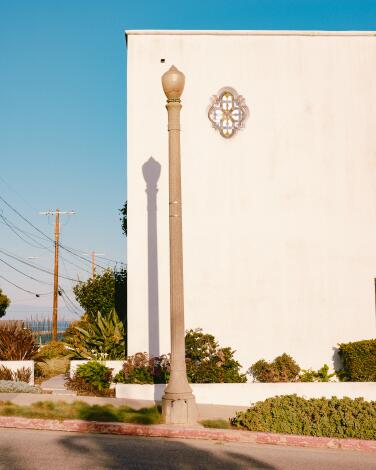
The Marbelite S-270
Find them: Gaffey Street from 32nd Street to Shepard Street; Wilmington Town Square Park at Avalon Boulevard and I Street
Sign up for The Wild
We’ll help you find the best places to hike, bike and run, as well as the perfect silent spots for meditation and yoga.
You may occasionally receive promotional content from the Los Angeles Times.



